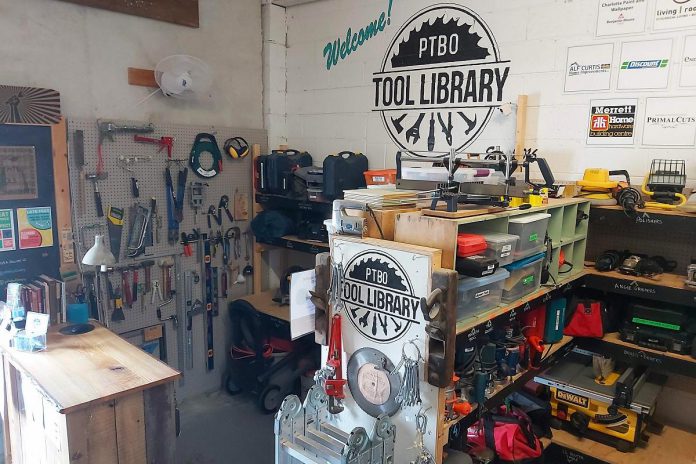
As we prepare to celebrate 20 years of Waste Reduction Week from October 18 to 24, I want to take this opportunity to look forward two decades. Time is a precious resource, and we often struggle to use time effectively when it comes to waste reduction and climate action.
It’s easy to say that an ounce of prevention is worth a pound of cure. It’s far more psychologically challenging to consider the next two decades of impacts in our daily choices. We need to exercise this muscle so it grows stronger.
Let’s imagine it is October 2041: the 40th anniversary of Waste Reduction Week. What individual and systemic waste reduction changes would you wish we had made now so that we could already be enjoying those benefits?
Below you’ll find six tips for waste reduction. As you read, reflect on how seizing these opportunities for change now could transform the next 20 years for the better.
1. Circular vs. linear economy
Waste Reduction Week begins with discussion of a circular economy versus a linear economy.
The plastic straw is a good example of a linear, wasteful economy: Canadians use 57 million of these every day, and after just one use most end up in landfill or polluting natural ecosystems. Those straws are part of an unsustainable linear economy: you can draw a straight line from raw resource, through manufacturing and a single use, and into the landfill.
In a circular economy, products are designed for change. They are made with as much re-used materials as possible and as few raw resources as possible — they can be repaired, re-used, and re-purposed into new products long before they need to be recycled or landfilled.
Instead of a straight line from raw resources to landfills, we draw an ongoing circle or spiral of re-use that reduces resource extraction and waste.
2. Be mindful of manufacturing

On “Textiles Tuesday” during Waste Reduction Week, we often talk about the environmental consequences of manufacturing the clothes we wear.
For example, it takes 2,600 litres of water to make one new t-shirt, and the textiles industry uses mostly non-renewable resources like oil to make synthetic fibres that then cause microfibre plastic pollution. North Americans send about 40kg of clothing per person to landfill each year — 95 per cent of that could be re-used or recycled.
What can you do?
Make clothing choices that reduce the impact of manufacturing, avoid fast fashion and synthetics, swap or share, sell or donate, upcycle or repurpose. Watch for opportunities when the local OPIRG Free Market starts up again. Visit opirgptbo.ca/get-involved/working-groups/free-market/ for more information.
Manufacturing impacts extend years beyond purchase, and they also extend beyond the clothing industry. Building our homes also has an environmental impact. Have you ever considered the emissions and resources needed to manufacture the foam, concrete, and synthetic materials that are commonly used in homes?
Achieving Real Net-Zero Emission Homes is a new report co-authored by Builders for Climate Action and Natural Resources Canada. This report suggests we should take into account manufacturing emissions when we assess and update building codes and policies.
“There is a path to near-zero emissions buildings using available and affordable materials,” says Chris Magwood, director of programs, research, and policy at the Endeavour Centre – The Sustainable Building School in Peterborough. “Huge emissions reductions are easily achievable more through education of designers and builders than through transformation of the industry.”
Learn more and read the Achieving Real Net-Zero Emission Homes report at www.buildersforclimateaction.org.
3. Desire fades, e-waste lingers

What’s the difference between this year’s and last year’s smartphone?
That difference has more to do with marketing new desires than it does with making a meaningful difference in your daily life. Let those desires fade before you purchase.
One company recently claimed that their newest phone represents an 11 per cent reduction in carbon emissions compared to last year’s phone. It’s great if those carbon emissions reduce with each iteration and each year, but the underlying manufacturing impacts on the environment are still unsustainable when these products are intentionally designed to be un-repairable, un-upgradeable, and ditched after a year or two.
This approach is fundamentally wasteful. Wherever possible, repair, refurbish, and recycle electronics.
If you must buy new, look for sustainable, ethical, and circular options. Consider the “more sustainable smartphone” Fairphone for example (www.fairphone.com), and email me at leif.einarson@greenup.on.ca if you’ve found a network carrier for this phone in Ontario.
For more e-waste solutions, reach out to our local rebootcanada.ca.
4. Pause before plastic
When you see plastic, pause and think. Most plastics are made from fossil fuels.
For more ideas on how to reduce plastics in your life, check out GreenUP’s monthly #ZeroWaste features by subscribing to our e-newsletter at greenup.on.ca/newsletter-signup/.
You can also chat with package-free and plastic-free guru Kristen LaRocque at the GreenUP Store and Resource Centre (378 Aylmer St. N., Peterborough).
5. Plan meals

About 47 per cent of wasted food in Canada comes from homes.
Of the 42,000 tonnes of waste dumped into the Peterborough landfill each year, approximately 5,880 is wasted food. That’s 650 garbage truck loads of wasted food!
Avoid “bought & forgot” waste. Plan meals before you buy food, eat what you buy, get creative with leftovers, and compost. Eat local and sustainably where you can.
Check out our article about meal planning for more information.
5. Share and repair
Ownership is overrated. For example, borrowing tools from the Peterborough Tool Library (www.ptbotoollibrary.ca) means you’ll have more money and space to build neat things.
You can also afford a much nicer bike if, instead of buying your own tools, you get a membership to B!KE in Peterborough (communitybikeshop.org) and make use of their shop and expertise.
How else can you share and repair in Peterborough?

Advocate for bike and car share programs, and support local swap, repair, and re-use programs like Repair Café Peterborough and Habitat for Humanity Restore.
Be in the loop for Waste Reduction Week and the next two decades of climate action benefits: sign up for GreenUP’s monthly e-newsletter at at greenup.on.ca/newsletter-signup/.
For more information about Waste Reduction Week in Canada, visit wrwcanada.com.


























